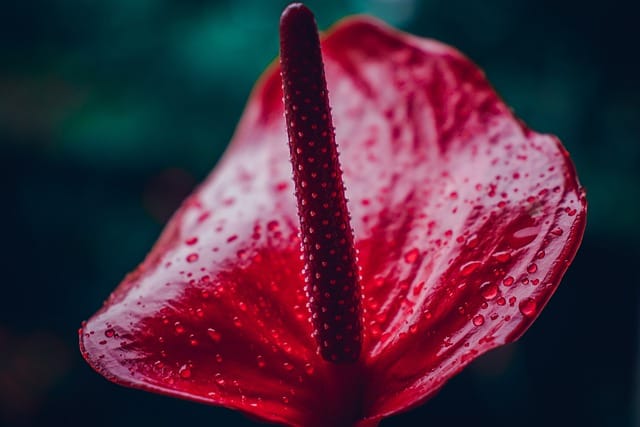How to grow Anthuriums
Anthrium plants, also known as flamingo flowers or painter's palette, are popular indoor plants due to their vibrant flowers and glossy leaves

In this article:
- Introduction to Anthuriums
- Choosing the Right Anthurium Variety
- Selecting the Perfect Indoor Location
- Soil and Potting Mix for Anthuriums
- Watering and Humidity Requirements
- Temperature and Light Conditions
- Fertilizing Anthurium Plants
- Pruning and Propagating Anthuriums
- Managing Pests and Diseases
- Common Problems and Troubleshooting Tips
- Frequently Asked Questions about Anthuriums
- Conclusion and Final Tips for Success
Introduction to Anthuriums
Anthrium plants, also known as flamingo flowers or painter's palette, are popular indoor plants due to their vibrant flowers and glossy leaves. Native to tropical regions, these plants can thrive indoors with the proper care and conditions.
Choosing the Right Anthurium Variety
When selecting an Anthurium variety, consider factors such as flower color, leaf shape, and plant size. Popular varieties include Anthurium andraeanum, Anthurium scherzerianum, and Anthurium clarinervium.
Selecting the Perfect Indoor Location
Anthuriums require bright but indirect light. Place them near a north or east-facing window where they can receive filtered light. Avoid exposing them to direct sunlight as it can scorch their leaves.
Soil and Potting Mix for Anthuriums
Choose a well-draining potting mix that retains some moisture. A mix of peat moss, perlite, and orchid bark or coconut coir works well for Anthuriums. Ensure the pot has drainage holes to prevent waterlogging.
Watering and Humidity Requirements
Anthuriums prefer slightly moist soil. Water them when the top inch of soil feels dry, but avoid overwatering as it can lead to root rot. Maintain a humidity level between 50-60% by misting the leaves regularly or placing the plant on a humidity tray.
Temperature and Light Conditions
Anthuriums thrive in temperatures between 60-85°F (15-29°C). Keep them away from drafts or extreme temperature fluctuations. Maintain a consistent temperature and avoid placing them near heating or cooling vents.
Fertilizing Anthurium Plants
Feed your Anthurium with a balanced water-soluble fertilizer every two months during spring and summer. Follow the instructions on the fertilizer package for the correct dosage. Reduce or stop fertilizing during the fall and winter months.
Pruning and Propagating Anthuriums
To promote healthy growth, remove yellow or dead leaves and spent flowers. Sterilize your pruning shears before use. Anthuriums can be propagated through division or stem cuttings. Follow proper propagation techniques to increase your plant collection.
Managing Pests and Diseases
Common pests that can affect Anthuriums include aphids, mealybugs, and spider mites. Regularly inspect your plants for any signs of infestation and take appropriate measures such as using insecticidal soaps or neem oil. Anthuriums are generally disease-resistant, but overwatering can lead to fungal issues.
Common Problems and Troubleshooting Tips
If your Anthurium leaves turn yellow, it may be a sign of overwatering or insufficient light. If the leaves turn brown or develop brown spots, it could indicate sunburn or too much direct light exposure. Adjust the watering, light conditions, or location accordingly.
Frequently Asked Questions about Anthuriums
Q: How often should I repot my Anthurium?
A: Repotting every 1-2 years or when the roots start to outgrow the current container is usually sufficient.
Q: Can I grow Anthuriums from seeds?
A: Anthuriums can be grown from seeds, but it may take several years for them to reach maturity and produce flowers. It is more common to propagate them through division or stem cuttings.
Conclusion and Final Tips for Success
Growing Anthuriums indoors can be a rewarding experience. With the right variety, suitable growing conditions, and proper care, you can enjoy their colorful blooms and lush foliage year-round. Remember to monitor the watering, light, and humidity levels, as well as regularly inspect your plants for any pests or diseases. By following these guidelines and troubleshooting tips, you'll be on your way to successfully growing Anthuriums in no time.
